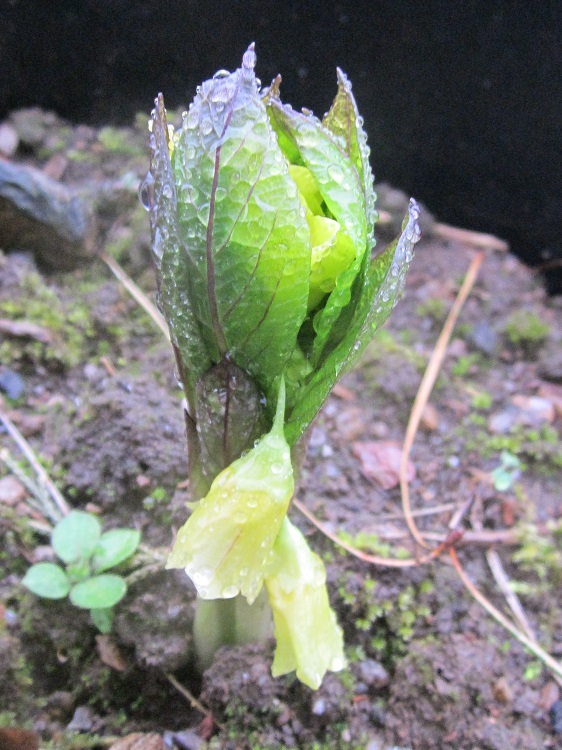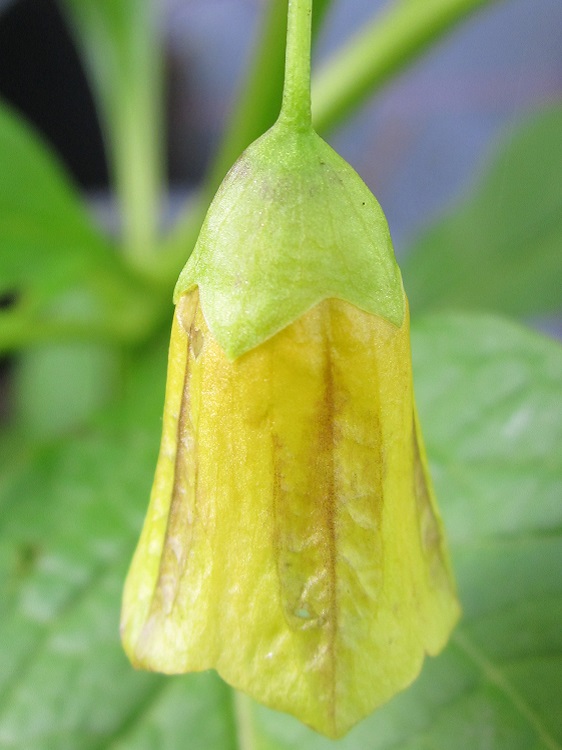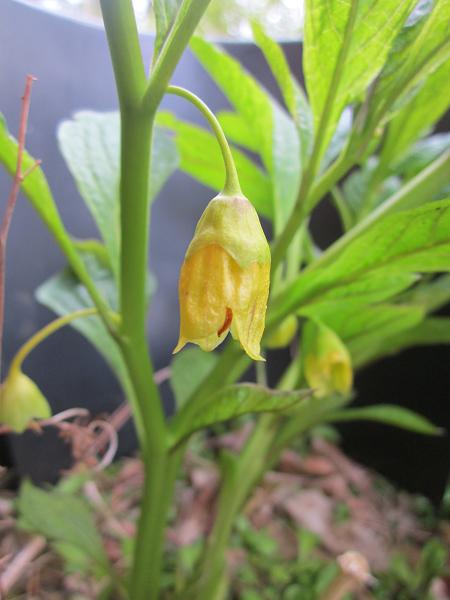 |
Scopolia carniolica is a woodland plant from the mountains of central Europe. This is the yellow flowered form
which is prettier than the typical brownish red form and slightly less sinister in appearance is it emerges from
the ground in spring. I grow it among the snowdrops and as if fattens up I am hoping to spread it around a bit more. Robert Pavlis, writing on the Ontario Rock Garden Society says: "Scopolia carniolica var. brevifolia is rarely found in gardens. It has interesting shinny leaves that develop very early in spring, followed by low-key flowers at a time when few perennials are flowering. It has cream-yellow flowers while the main species, Scopolia carniolica, has chocolate-red flowers. It is also known as the yellow scopolia, European scopolia and henbane bell. It is a member of the Solanaceae family and also contains alkaloids which are poisonous. My midsummer the plant starts dying back and goes underground until the following spring. It is reported to spread mostly by rhizome fragmentation but in my garden is has expanded very slowly. It has also not made viable seeds." Writing in the Shade and Woodland Plants group newsletter (Hardy Plant Society), Colin Crew says: "A form native to Slovenia named S. carniolica var. brevifolia has flowers of a dull greenish yellow. It was discovered by Franc Hladnik, Director of Ljubljana Botanic Gardens and is frequently called S. carniolica f. hladnikiana. This plant differs significantly from the type in stature, the emerging leaf stems being shorter and plump, and it emerges and flowers about two weeks later than its purple relative. Daily inspection of the leaf buds of S. carniolica var. brevifolia in late winter will be rewarded with the attractive sight of the bright yellow young flowers clustered together within a basket of leaves, looking like chicks in a nest. More of the young flower is visible than in the purple form at this stage and it is, for me, the most attractive period of the plant's life cycle. Both yellow and purple forms of scopolia have a green calyx that better complements the yellow flowers. " My first attempt to establish it under the trees failed but I will have another go. |
|
| 13th April 2013 | ||


